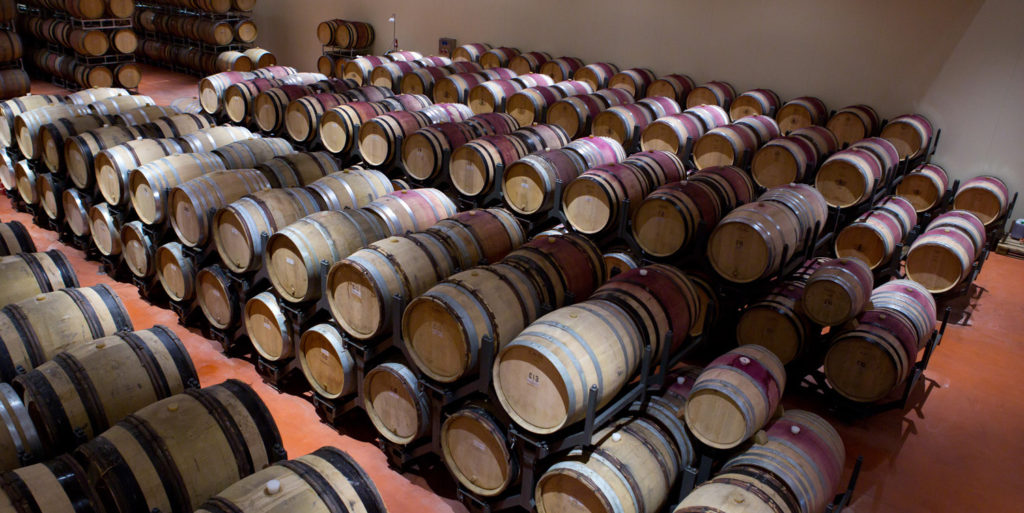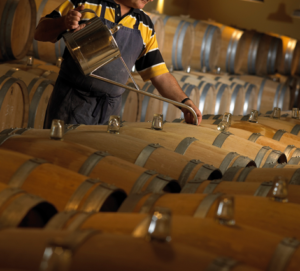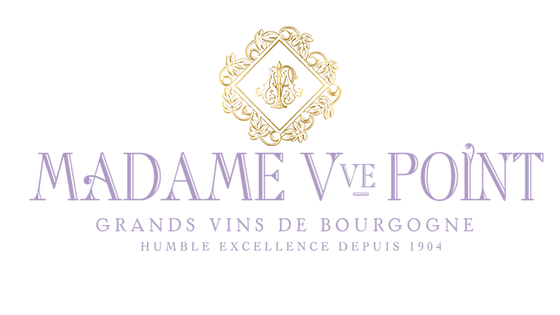
The wines are matured either in oak barrels or in stainless steel vats, or a combination of the two. We use no more than 10% new barrels to prevent the natural characteristics of our wines being overpowered by strong woody notes. Each of our wines has its own identity and is the pure expression of its terroir, as Madame Jeanne-Marie POINT always wanted.
New or almost new barrels absorb a considerable amount of wine which, together with evaporation is known as ‘the angels share’. They must therefore be topped up to maintain a constant level of wine and ensure that our precious liquid is correctly protected. This maturing period lasts between 10 and 24 months, depending on the wine, and a second fermentation takes place in the barrel; malolactic fermentation where the malic acid is transformed into lactic acid. This natural phenomenon is linked to the activity of specific bacteria which, depending on the vintage, reduce the acidity in the wines.

FOCUS : three keys to understanding
How do oak barrels influence the ageing process of these great Burgundies ?
Oak ageing involves different exchanges between the wood and the wine. Here are three keys to help you understand this intimate relationship.
1 : the wood adds aromas to the wine
When a barrel is made, it is heated, or ‘toasted’, to allow the wood to be bent into shape. Once the metal bands are in place, the barrel is flame heated a second time to toast the wood at depth.
It is in fact this toasting process that is at the origin of the oaky aromas which pass into the wine during the ageing process.
Smoky, oaky, toasted notes and caramel and vanilla aromas are characteristic of an oak aged wine, and come from the contact of the wine with the wood.
2 : the wood mellows the tannins
The tannins in wine are molecules derived from the grape skins and pips, but they also come from the oak used for ageing the wine. These two different types of tannin (from the wine and from the wood) associate to create a new tannic structure which is more supple and stable. The firmer the tannins, the longer ageing period they need to mellow.
The family of MADAME VEUVE POINT has experimented over many years; it is a particularly fine and complex skill that is passed down from generation to generation in Burgundy.
3 : the wood brings oxygen to the wine
Oak barrels possess qualities that stainless steel or concrete vats do not have. They have a certain porosity that allows exchanges between the wine and the air. The small amounts of oxygen that penetrate the barrel via the bung hole and the spaces between the staves are particularly beneficial. This slow oxygenation enables a reduction in primary aromas, principally fruit and floral notes that come from the grape.
Inside a barrel, the 225 litres of wine are in contact with the wood, allowing a gentle evolution in the structure of the wine, and contributing richness and complexity. This micro-oxygenation of these great wines of Burgundy contributes to their evolution.
To Resume :
Oak ageing is beneficial to fine Burgundies. It adds to their aromatic complexity when skilfully managed in the right quantity. Not too many new barrels each year, but just the right amount to ensure the rotation of one vintage to another of the Grand Wines MADAME VEUVE POINT.
The CellarMaster “Madame Veuve Point”

